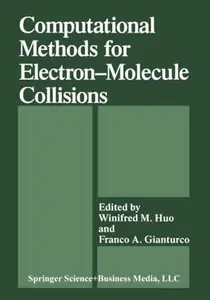December 9, 2024
Computational Methods for Electron-Molecule Collisions

Free Download Computational Methods for Electron-Molecule Collisions By T. N. Rescigno, C. W. McCurdy, A. E. Orel, B. H. Lengsfield III (auth.), Winifred M. Huo, Franco A. Gianturco (eds.)
1995 | 364 Pages | ISBN: 1475797990 | PDF | 18 MB
The collision of electrons with molecules and molecular ions is a fundamental pro cess in atomic and molecular physics and in chemistry. At high incident electron en ergies, electron-molecule collisions are used to deduce molecular geometries, oscillator strengths for optically allowed transitions, and in the case of electron-impact ionization, to probe the momentum distribution of the molecule itself. When the incident electron energy is comparable to or below those of the molecular valence electrons, the physics involved is particularly rich. Correlation and exchange effects necessary to describe such collision processes bear a close resemblance to similar efft:cts in the theory of electronic structure in molecules. Compound state formations, in the form of resonances and vir tual states, manifest themselves in experimental observables which provide details of the electron-molecule interactions. Ro-vibrational excitations by low-energy electron collisions exemplify energy transfer between the electronic and nuclear motion. The role of nonadiabatic interaction is raised here. When the final vibrational state is in the continuum, molecular dissociation occurs. Dissociative recombination and dissociative attachment are examples of such fragmentation processes. In addition to its fundamental nature, the study of electron-molecule collisions is also motivated by its relation to other fields of study and by its technological appli cations. The study of planetary atmospheres and the interstellar medium necessarily involve collision processes of electrons with molecules and molecular ions.
Buy Premium From My Links To Get Resumable Support,Max Speed & Support Me
Links are Interchangeable – Single Extraction
